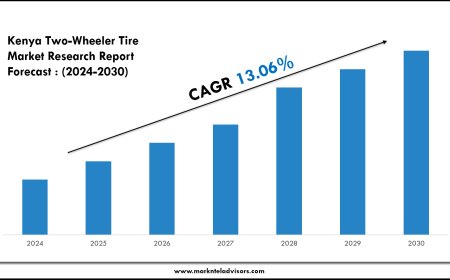The Journey of an IPO: From Filing to First Trade
Initial Public Offerings (IPOs) mark one of the most transformative events in a company’s life.
Initial Public Offerings (IPOs) mark one of the most transformative events in a companys life. It's the point where a private enterprise steps into the public domain, inviting everyday investors to participate in its growth story. For retail investors and financial enthusiasts alike, understanding the lifecycle of an IPOright from filing with regulators to the moment of first tradecan be both fascinating and essential for making informed investment decisions.
This blog post breaks down the IPO process in an easy-to-understand format, detailing every stage a company undergoes before its shares begin trading on the stock exchange.
1. What is an IPO? A Quick Refresher
An IPO, or Initial Public Offering, is the first time a privately held company offers its shares to the public through a stock exchange. By going public, the company raises capital from investors which can be used for expansion, debt repayment, or other business objectives. In return, investors receive ownership in the company in the form of shares.
But launching an IPO isnt as simple as flipping a switch. It involves a carefully regulated, multi-step process that takes months of preparation, paperwork, and approvals.
2. Decision and Preparation: The Early Stages
The journey begins internally within the company when the management and board of directors decide that it's the right time to raise funds through an IPO. This decision is usually driven by factors such as:
-
The need for significant capital
-
Expansion plans
-
Reducing debt
-
Enhancing the companys public profile
Once the decision is made, the company appoints several advisors, including investment banks (often referred to as book-running lead managers or BRLMs), legal advisors, and auditors. These entities guide the company through the compliance and documentation required for the IPO.
3. Filing the Draft Red Herring Prospectus (DRHP)
One of the most crucial documents in the IPO process is the Draft Red Herring Prospectus (DRHP). This is submitted to the Securities and Exchange Board of India (SEBI), the regulatory authority overseeing IPOs in India. The DRHP contains detailed information such as:
-
Companys business model
-
Financial performance
-
Risk factors
-
Purpose of raising capital
-
Management details
-
Legal proceedings (if any)
SEBI reviews the DRHP, raises queries if needed, and once satisfied, approves it. After SEBI's clearance, the final version of the prospectus (RHP) is published, and the IPO dates are officially announced.
4. Determining the Price Band and Lot Size
Next comes pricing. Companies in India typically follow a book-building process, where they set a price band instead of a fixed price. Investors can bid for shares within this range during the IPO window.
The company also determines the lot sizethe minimum number of shares one can apply for. For retail investors, knowing this is crucial because applications below the minimum lot size are invalid.
5. Who Can Apply? IPO Application Eligibility Criteria
Not everyone can participate in an IPO in the same way. The process differs based on investor categoriesretail, high-net-worth individuals (HNIs), and qualified institutional buyers (QIBs).
Retail investors, in particular, must meet certain conditions regarding the investment limit and use of specific platforms like UPI. Understanding the detailed IPO Application Eligibility Criteria is essential before applying. This ensures your bid complies with SEBI guidelines and stands a fair chance during allotment.
6. The Bidding Process: How to Apply for an IPO
Once the IPO opens for subscription, which usually lasts three working days, investors can place their bids. Applications can be made through:
-
Online trading platforms
-
Mobile apps linked with UPI
-
ASBA (Applications Supported by Blocked Amount) via net banking
During this window, investors can revise or cancel their bids. The exchange provides real-time updates on demand in different investor categories.
7. Share Allotment and Refunds
After the IPO closes, the registrar and lead managers analyze all the bids to determine the final price. This is usually the price at which the shares will be allotted and is often the cut-off price in case of oversubscription.
Once the price is finalized:
-
Shares are allotted to investors using a computerized lottery system (for oversubscribed IPOs).
-
Unsuccessful applicants receive their refunds or release of blocked funds (in case of ASBA/UPI).
-
The shares allotted are credited to investors demat accounts before the listing date.
8. Listing Day: From Allocation to First Trade
This is the day when the companys shares are listed on the stock exchange (NSE, BSE, or both). It's also the day when shares become publicly tradable, and the market decides the real-time value based on demand and supply.
Investors closely watch the IPO opening time because that's when the trading bell rings, and the stock begins its journey in the secondary market. A successful listing usually sees the stock debuting at a price higher than its issue price, leading to listing gains for early investors.
However, not all IPOs perform as expected. Hence, understanding the companys fundamentals, market conditions, and risk appetite is vital before investing.
9. Post-Listing Responsibilities
Going public brings ongoing responsibilities for the company. These include:
-
Quarterly financial disclosures
-
Governance and board compliance
-
Transparency in operations
-
Reporting insider trades and material developments
These obligations ensure investor confidence and help maintain a healthy relationship with shareholders.
Conclusion: The IPO Journey is Just the Beginning
While the IPO journey concludes with the first trade, it also marks the beginning of a companys life as a publicly listed entity. For investors, the IPO process is not just about grabbing short-term gainsits about aligning with a companys vision, assessing its long-term potential, and becoming part of its growth journey.
By understanding each stagefrom filing to tradinginvestors can make better decisions, avoid common pitfalls, and fully appreciate the significance of IPOs in wealth creation. Whether youre a first-time investor or a seasoned participant, knowing how an IPO works helps demystify the process and empowers you to invest with confidence.







































